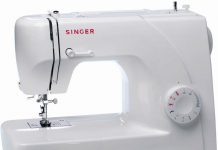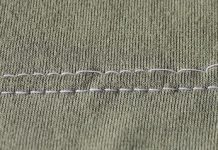I’ve seen many sewers make the mistake of using the same tension setting for all their sewing projects and then they wonder why the finish isn’t perfect. The fact is, the wrong tension is a sewing disaster. It can ruin your sewing project and literally give you a tension headache. Knowing how to troubleshoot your tension problems can set the stage for a smoother sewing experience.
So How Do You Know Whether The Tension Is Right Or Wrong?
That’s the easy part. Here are a few common signs that indicate that your tension is set wrongly for that particular fabric.
- If the stitches are too loose and look like they have loops, your tension is too loose
- If the stitches are too tight and the thread looks like it is pulled too taut, the tension is set to too tight
- Broken threads and skipped stitches are also indications of tension that is too tight
Any of the above scenarios will result in you having to remove all of those stitches and start all over again. To avoid this nightmare, it is a good idea to sew over a small swatch of fabric that you are using for that particular project before starting to sew on the actual project. If the stitches look good on the swatch, you are all set to go ahead. If the tension appears too loose or too tight, now is the time to adjust the setting. Sew another test swatch and move on to the actual project only when you are happy with the results.
How Do You Adjust the Tension?
There are actually 2 things that affect the tension of the stitches- one is the tension setting and the second is the thickness of the thread.
Check your sewing machine manual for how to set the tension setting on your particular model and don’t be afraid to fiddle around with the tension setting and customize it to suit your fabric and your sewing project.
The standard tension setting on most sewing machines is 5, which is ideal for the majority of fabrics, you will need to set it tighter for lightweight fabrics such as silk and chiffon and looser for heavier fabrics such as denim or canvas.
The tension and the width of the thread should be in sync with one another for best results.
Heavy Fabrics = Thicker threads + looser tension. Thicker threads, which are needed for heavier fabrics, need a larger space to pass smoothly between the tension discs. The more the distance between the discs, the looser the tension.
Light Fabrics = Finer threads + tighter tension. Lightweight fabrics need finer threads, which need a narrow space to pass between the tension discs. The lesser the space between the tension discs, the tighter the tension.
Tip for the day
Don’t forget to use a sewing machine needle that is appropriate for the size of the thread you are using. A needle that is too large will result in uneven stitches, whereas one that is too small can cause the thread to fray or shred.









